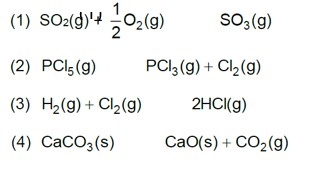A solution of two components containing n₁ moles of the 1st component and n₂ moles of the 2nd component is prepared. M₁ and M₂ are the molecular weights of component 1 and 2 respectively. If d is the density of the solution in gmL⁻¹, C₂ is the molarity and x₂ is the mole fraction of the 2nd component, then C₂ can be expressed as:
A solution of two components containing n₁ moles of the 1st component and n₂ moles of the 2nd component is prepared. M₁ and M₂ are the molecular weights of component 1 and 2 respectively. If d is the density of the solution in gmL⁻¹, C₂ is the molarity and x₂ is the mole fraction of the 2nd component, then C₂ can be expressed as:
Option 1 -
C₂ = 1000x₂ / (M₁+x₂(M₂-M₁))
Option 2 -
C₂ = dx₂ / (M₂+x₂(M₂-M₁))
Option 3 -
C₂ = 1000dx₂ / (M₁+x₂(M₂-M₁))
Option 4 -
C₂ = dx₁ / (M₂+x₂(M₂-M₁))
-
1 Answer
-
Correct Option - 3
Detailed Solution:Let total mole = 1
Similar Questions for you
0.01 M NaOH,
M = 1 * 10-2

pOH = 2
pH = 2
Kp = Kc (RT)Dng
36 * 10–2 = Kc (0.0821 * 300)–1
Kc = 0.36 * 0.0821 * 300 = 8.86 » 9
A(g) ->B(g) + (g)
Initial moles n 0 0
Eqb. moles n(1 – a) na
total moles =
Eqb. pressure
On increasing pressure, equilibrium moves in that direction where number of gaseous moles decreases.
Taking an Exam? Selecting a College?
Get authentic answers from experts, students and alumni that you won't find anywhere else
Sign Up on ShikshaOn Shiksha, get access to
- 65k Colleges
- 1.2k Exams
- 679k Reviews
- 1800k Answers


